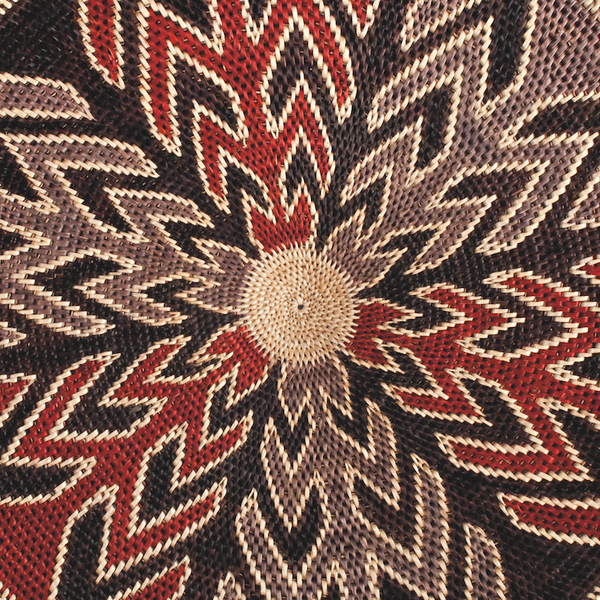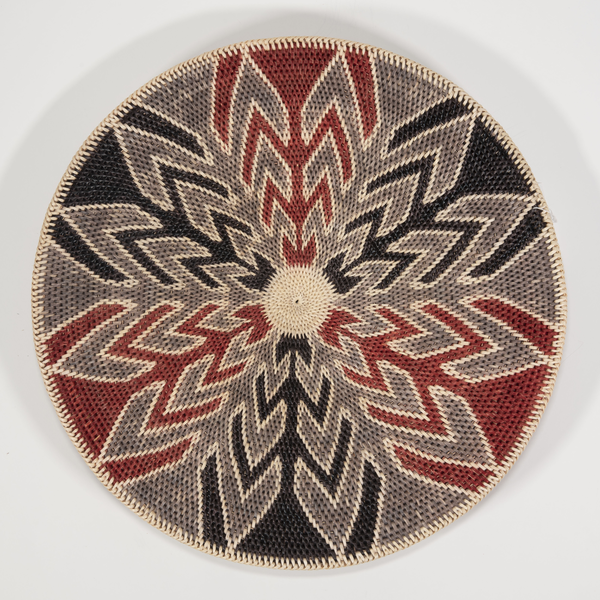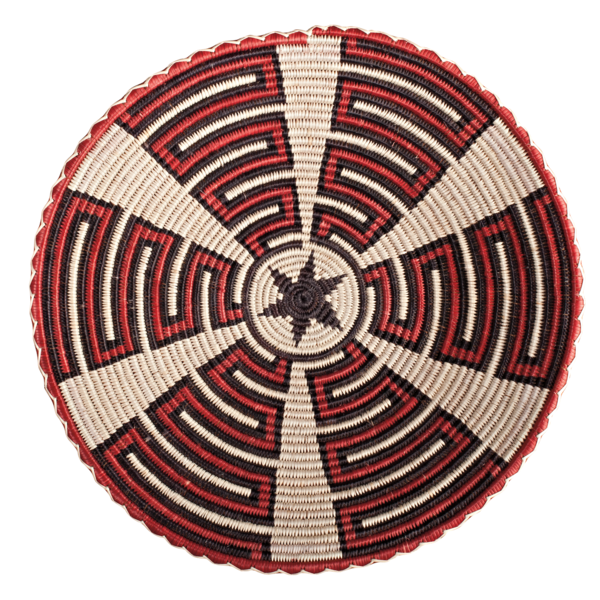Corn Symbolism
Naadą́ą́’ (corn) is a primary staple of Diné (Navajo) life and a symbol of sustenance in Dinétah (the Diné homeland). It is one of four sacred plants given to the Diné and it provides both food and medicine. Eating corn can bring clear thoughts and new knowledge. Diné families prepare many dishes with it, including dried steamed corn, roasted corn, kneel-down bread, and blue-corn mush. In addition to sustaining the Diné physically, corn plays a central role in Diné spirituality. Sacred stories tell how the Diyin Dine’é (Holy People) created the first humans from corn. Tádídíín (yellow corn pollen), found on the tassels of each corn stalk, is collected and used widely in ceremonies, as a blessing, and is offered during prayer. Preparing a large roasted corn cake is an important part of Kinaaldá, the coming-of-age ceremony for girls. Corn, corn pollen, and the creation of humans and all things are at the core of the Hózhǫ́ǫ́jí (Blessing Way).




